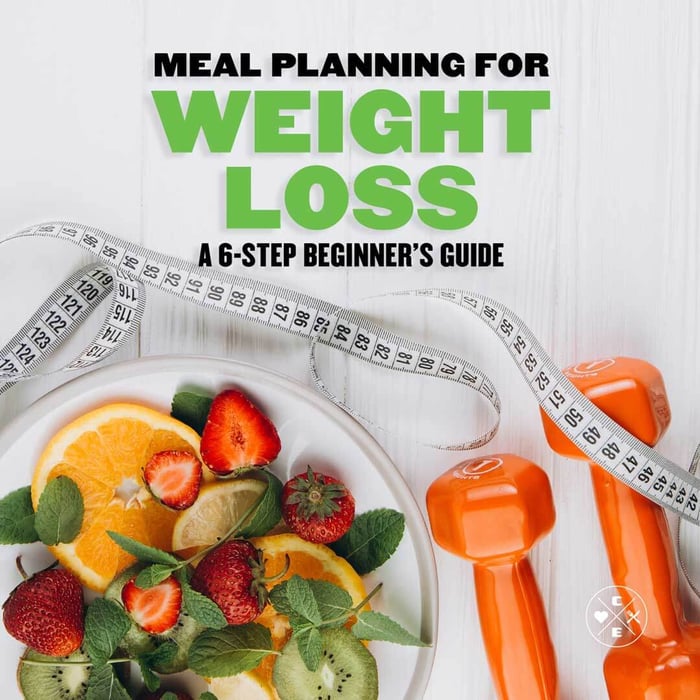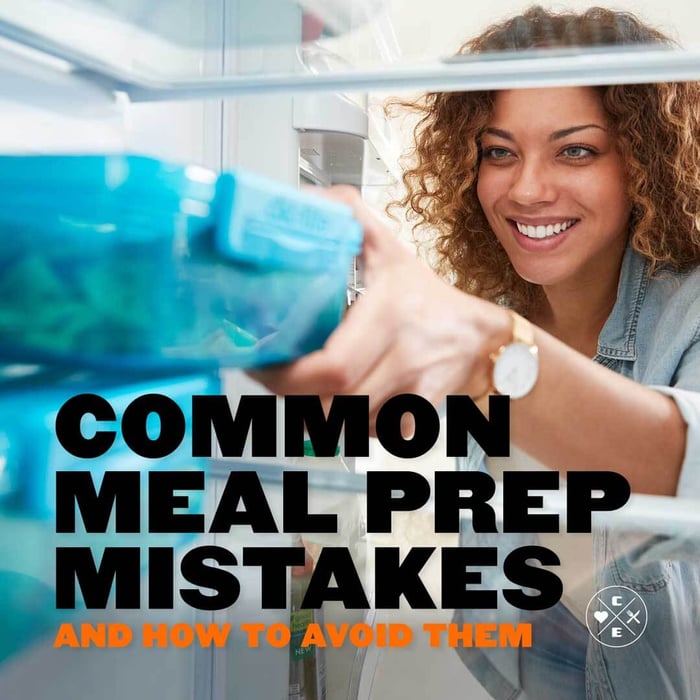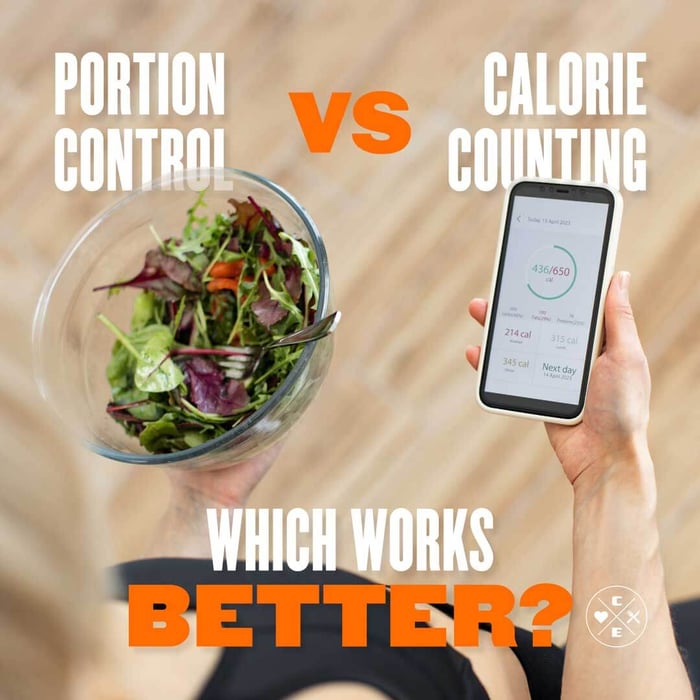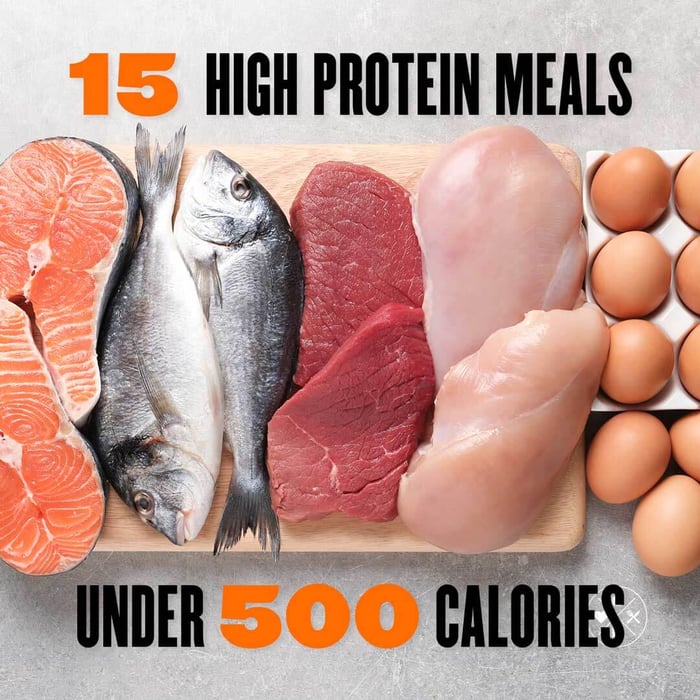
Meal Planning for Weight Loss: 6-Step Beginner's Guide
Jason Nista
Nutrition
|
Weight Loss
11 minute read
Meal planning can simplify weight loss by helping you stick to a calorie deficit, make healthier food choices, and reduce daily decision-making stress. Here’s how to get started:
Set Realistic Goals: Aim to lose 1–2 pounds per week by creating a daily calorie deficit of 500–750 calories. Use the SMART framework to set clear, achievable targets.
Choose Nutritious Ingredients: Focus on whole, unprocessed foods like lean proteins, leafy vegetables, whole grains, and healthy fats to stay full and energized.
Master Portion Control & Meal Prep: Use tools like food scales and measuring cups to control portions. Prep meals in advance to save time and avoid unhealthy choices.
Create Balanced Meal Plans: Design plans that include all essential nutrients while fitting your calorie goals. Add healthy snacks to curb hunger between meals.
Stay Consistent: Balance structure with flexibility to handle unexpected events. Track progress and adjust as needed.
Use Tools & Resources: Leverage meal planning templates, apps, and prepared meal services to simplify the process.
How To Portion Control For Weight Loss
1: Setting Realistic Weight Loss Goals
When it comes to meal planning for weight loss, setting goals you can stick to is the key to success. Instead of aiming for quick, drastic results, focus on making steady, manageable changes that work over time.
1.1: Define Your Weight Loss Targets
Losing 1-2 pounds per week is a healthy and realistic target. This can usually be achieved by creating a daily calorie deficit of 500-750 calories, paired with balanced nutrition and regular physical activity. Having clear and realistic goals helps you design meal plans that actually work.
Try using the SMART framework to set your goals:
Specific: For example, "lose 10 pounds."
Measurable: Track your weight and progress regularly.
Achievable: Aim for 5-10% of your starting weight.
Relevant: Make sure your goal aligns with your health priorities.
Time-bound: For instance, "lose 10 pounds in 3 months."
1.2: Consider Dietary Needs and Preferences
Your meal plan should fit your unique dietary requirements and personal tastes - this makes it easier to stick with in the long run. Think about factors like health conditions (e.g., diabetes or allergies), dietary choices (e.g., vegetarian or vegan), your daily schedule, budget, and even cultural food traditions.
For example:
Vegetarians can include protein-rich foods like legumes and tofu.
If you're short on time, prep-ahead meals can save the day.
Focus on eating whole, nutrient-packed foods that match your dietary needs. Track your progress regularly and adjust your goals as necessary. Remember, small and consistent changes often lead to better results than extreme diets. Building habits you can maintain beyond your target weight is the real game-changer [1].
Once you've nailed down your goals and preferences, it's time to choose nutritious ingredients for your meal plan.
2: Choosing Nutritious Ingredients
Picking the right ingredients is a cornerstone of effective weight loss meal planning. The goal? Prioritize foods that pack a nutritional punch while helping you stick to a calorie deficit.
2.1: Stick to Whole, Unprocessed Foods
Whole, unprocessed foods are packed with nutrients, keep you full longer, and are generally lower in calories. These foods not only aid weight loss but also help you stay energized throughout the day.
Here's a quick guide to nutrient-rich options:
| Food Category | Best Choices | Benefits for Weight Loss |
|---|---|---|
| Proteins | Chicken breast, fish, eggs, tofu | Keeps you full longer, supports muscles |
| Vegetables | Leafy greens, broccoli, peppers | Low in calories, high in fiber and vitamins |
| Fruits | Berries, apples, citrus | Natural sweetness, fiber, antioxidants |
| Whole Grains | Quinoa, brown rice, oats | Provides steady energy, aids portion control |
| Healthy Fats | Avocados, nuts, olive oil | Boosts satisfaction, helps absorb nutrients |
2.2: Keep Your Meals Interesting
Mixing things up in your meals not only fights boredom but also ensures you're getting a wide range of nutrients. Incorporating colorful fruits and vegetables can provide essential vitamins and minerals, which play a role in supporting weight loss [1][3].
Here are a few tips for variety:
Opt for seasonal produce and aim to include three different-colored veggies daily. This keeps meals cost-effective and nutritionally balanced.
Rotate between plant-based and animal proteins, and rely on herbs and spices instead of calorie-heavy sauces for flavor.
"The key is selecting nutrient-dense foods that keep you satisfied." - Jennifer A. Linde, PhD [2]
For those with packed schedules, prepping ingredients in advance can be a lifesaver. Roast some vegetables, cook a batch of whole grains, and portion out proteins. Prepping ahead makes it easy to throw together balanced meals during the week without straying from your goals.
Once you've stocked up on wholesome, diverse ingredients, the next step is mastering portioning and meal prep techniques.
3: Mastering Portion Control and Meal Prep
Once you have nutritious ingredients, the next step is to focus on portion sizes and meal preparation. These skills ensure you can maintain a calorie deficit while keeping meals both filling and healthy.
3.1: Understanding Portion Sizes
Knowing how to measure portions accurately is essential for managing your calorie intake. Here's how to get started:
Food Scale: Use it to measure proteins (like 4-6 oz of chicken breast) and grains.
Measuring Cups: Perfect for grains and cereals (e.g., 1 cup of cooked brown rice or 1/2 cup of oatmeal).
Portion Plate: Divide your plate into sections - half for vegetables, a quarter for protein, and a quarter for whole grains.
Interestingly, studies suggest that smaller plates can trick your brain into thinking you're eating more, helping you naturally reduce portion sizes. Pre-portioning food into containers is another effective way to build consistent habits.
"Consistency in measuring portions is key to mastering portion control", say experts at the Mayo Clinic [4].
3.2: Meal Prep Tips for Busy Lives
Meal prep can save time and help you stick to your weight-loss goals. Here's a quick, effective strategy:
Batch Cooking: Set aside 2–3 hours each week to cook essentials like proteins, roasted vegetables, and whole grains. This gives you ready-to-use ingredients for a variety of meals.
Smart Storage: Use compartmentalized glass containers to keep food fresh and portioned. Label everything with the contents and dates for easy access.
If you're too busy to prep, pre-portioned meal services like Clean Eatz Kitchen offer convenient options, with meals under 600 calories.
"Being flexible with meal planning while maintaining portion control is essential for long-term success" [1].
With portion control and meal prep under your belt, you're ready to build balanced meal plans that support your weight-loss journey.
sbb-itb-1989a25
4: Creating Balanced Meal Plans
Balancing portion control with nutritious choices is key to creating a meal plan that supports weight loss while ensuring your body gets the nutrients it needs.
4.1: Examples of Meal Plans for Weight Loss
To lose 1-2 pounds per week, aim for a daily calorie deficit of 500-750 while still meeting your nutritional requirements. Here's an example of a daily meal plan:
| Meal | Example | Calories | Benefits |
|---|---|---|---|
| Breakfast | 1 cup Greek yogurt + 1 cup berries + 1/3 cup low-sugar granola | 300 | High in protein, fiber, and antioxidants |
| Lunch | 4 oz grilled chicken + 1 cup mixed greens + 1/2 cup cucumber + 1/4 cup hummus | 350 | Lean protein, plenty of veggies, and healthy fats |
| Dinner | 4 oz poached salmon + 1 cup quinoa + 1 cup steamed broccoli | 400 | Packed with Omega-3s, complex carbs, and vitamins |
| Snacks | 1 medium apple + 1 tbsp almond butter | 95 | Provides fiber, healthy fats, and steady energy |
If meal prepping feels overwhelming, consider using meal delivery services that offer portion-controlled options to simplify your routine.
4.2: Strategies for Healthy Snacking
Healthy snacking can help you avoid overeating at mealtime and keep energy levels steady. The key is to choose snacks that are both satisfying and portion-controlled. Timing snacks between meals can also help stabilize blood sugar and curb hunger.
Great snack options include:
Fruit paired with nut butter
Veggies with hummus
Greek yogurt topped with berries
A small handful of almonds (about 23 pieces)
"Being flexible with meal planning while maintaining portion control is essential for long-term success" [1].
5: Staying Consistent with Your Meal Plan
Consistency is key when it comes to sticking with a meal plan. While creating the plan is the first step, the real challenge is following through over time.
5.1: Balancing Structure and Flexibility
Meal planning works best when it blends structure with a bit of flexibility. Life happens - social events, hectic workdays, or unexpected travel can throw off your routine. Instead of seeing these as roadblocks, think of them as chances to adjust and stay on track.
Here’s how to handle some common scenarios:
| Situation | How to Handle It |
|---|---|
| Social Events | Check the menu in advance, pick lighter options. |
| Busy Workdays | Keep backup meals and healthy snacks on hand. |
| Travel | Pack portable snacks, research food options nearby. |
| Cravings | Stock portion-controlled treats to satisfy them. |
Prepared meals from services like Clean Eatz Kitchen can also be a lifesaver. They offer portion-controlled options that make it easier to stick to your plan, even on your busiest days.
5.2: Tracking Progress and Adjusting as Needed
Keep tabs on your progress with simple methods like weekly weigh-ins, measuring your body, or noting energy levels. This helps you spot trends and make small tweaks to stay aligned with your goals.
"Staying positive is essential, and having compassion for yourself is key." - Emory Healthcare [2]
Using tracking apps to log daily intake and check nutritional balance [1] can help you stay mindful of your eating habits. Pay attention to hunger cues to prevent overeating, and if you hit a plateau, make gradual changes to your plan. A food diary can also reveal patterns that need adjusting.
Mindful eating is a big part of staying consistent. If you slip up, treat it as a learning moment rather than a failure. For extra support, consider reaching out to healthcare providers or nutritionists for personalized advice [2][3].
Once you’ve built consistency into your routine, it’s time to explore tools and resources that can make meal planning even easier.
6: Using Tools and Resources
Incorporating the right tools and resources can simplify meal planning and keep you on track with weight loss goals. These tools help with portion control, balanced nutrition, and sticking to a consistent routine, all of which are key to success.
6.1: Using Meal Planning Templates
Meal planning templates and apps like AnyList can help you organize your meals, track portions, and create grocery lists. They make the process less stressful and more structured by offering features like:
Weekly meal schedules
Grocery lists sorted by food groups
Tracking dietary preferences
Monitoring portion sizes
Combine these tools with items like food scales and storage containers for even better results. Many apps can also generate shopping lists automatically, keeping you organized and focused on your weight loss journey [1].
Here are some essential tools to consider:
| Tool Type | Purpose |
|---|---|
| Food Scale | Accurate measurements for proteins and carbs |
| Measuring Cups | Helps control portions for grains and liquids |
| Storage Containers | Ideal for pre-portioning meals for the week |
| Multifunctional Cooker | Great for efficient batch cooking |
6.2: Trying Prepared Meal Services
When you're short on time, prepared meal services can be a lifesaver. Options like Clean Eatz Kitchen provide calorie-controlled meals that are ready to eat, making it easier to stick to your plan without the hassle of cooking.
These services offer benefits such as:
Pre-measured portions for accurate calorie tracking
Convenient, healthy meals ready to eat
Time-saving solutions for busy schedules
A helpful way to build consistent, healthy eating habits
"Creating a realistic and healthy weight loss program involves setting achievable goals, making healthier food choices, and staying motivated" - Emory Healthcare [2]
Conclusion: Begin Your Meal Planning Journey
Starting your weight loss journey with meal planning doesn't have to feel daunting. It gives you the ability to take charge of your nutrition, helping make weight loss both manageable and effective. By sticking to balanced choices and building steady habits, you can create a routine that works for your life.
Here are some key steps to keep in mind:
Set clear and realistic goals
Plan meals that are both nutritious and portioned properly
Use tools and resources that simplify the process
Stay consistent but allow room for flexibility
Whether you prefer using apps, meal delivery services, or doing it the old-fashioned way, the focus should always be on creating habits that match your needs and schedule. Combining these strategies with consistency will help you stay on track for lasting results.
"The true foundation for successfully losing weight is developing a realistic and healthy program that fits your body and lifestyle" [2]
With the right tools, a positive approach, and steady effort, you're well on your way to reaching your weight loss goals through smart meal planning and balanced nutrition.
Related Articles
Common Meal Prep Mistakes and How to Avoid Them
8 minute read
15 High-Protein Meals Under 500 Calories
16 minute read



